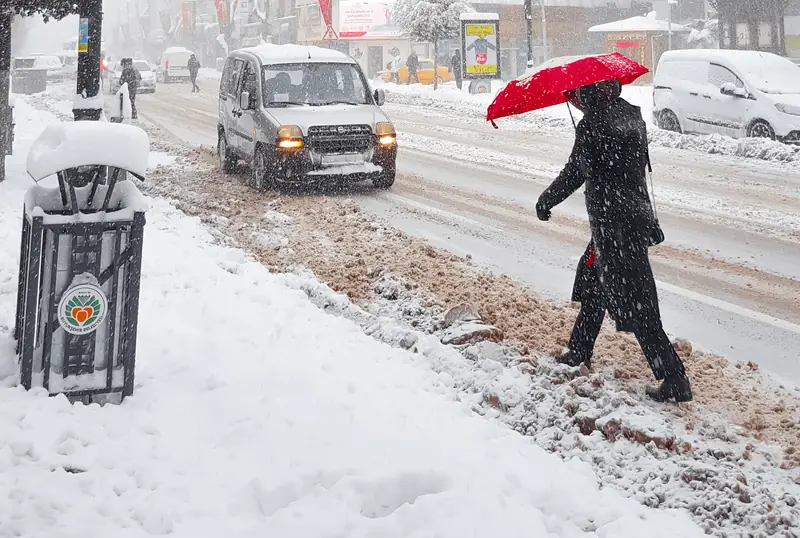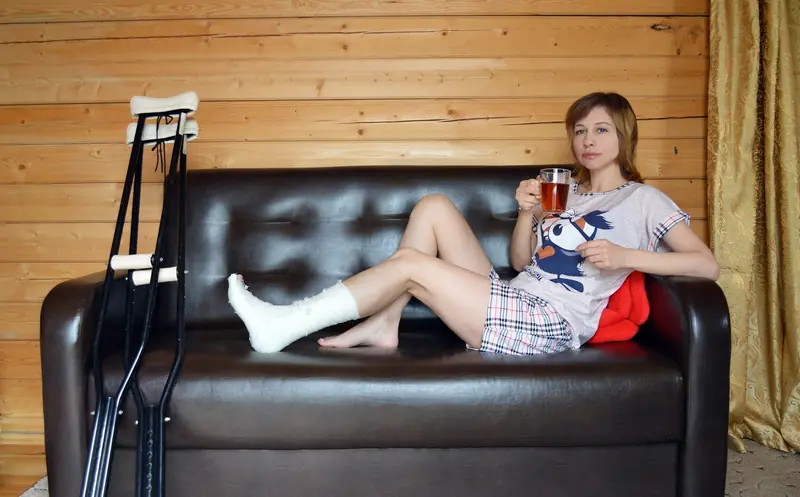
HouseWife has compiled recommendations on safety measures, fall techniques, self-help, and the prevention and treatment of bone and joint injuries.
Winter Tires
Frost following a thaw typically increases the workload for trauma surgeons. To avoid becoming a victim of icy conditions, proper gear for the “slippery season” is essential. The first line of defense against winter falls is comfortable footwear with a sturdy sole. Just like drivers, pedestrians need to ditch their “bald tires.” Winter shoes are designed with multidirectional treads, similar to car tires.
If you find yourself on a slick surface in flat-soled shoes, homemade anti-slip devices can help prevent injuries. You can create a textured sole using a nail, a heated metal rod, or a soldering iron. An alternative tool is a fine grater: simply rub it on the sole to reduce slipping. Be careful not to overdo it, as this could damage your shoes. Another folk remedy is to stick a couple of wide adhesive bandages in a cross pattern on the sole. These need to be replaced every three days.
The lifespan of the next preventive measure is about two weeks. Coat the sole with glue and attach sandpaper to it. Sandpaper with a fabric backing provides better grip. You can color the attachment with a black marker to make it less noticeable. Remember to remove such shoes indoors, especially on hardwood floors, to avoid scratching the surface.
A simpler option is to coat the sole with glue and sprinkle sand on it before it dries. This will make the sole safe for a few weeks. The most accessible method is to rub the sole with raw potatoes daily.

The Art of Falling
Contrary to the misguided practice of “going limp” when losing balance, trauma surgeons warn against relaxing during a fall. Since the impact force is absorbed by the bones, a relaxed body increases the likelihood of fractures. Instead, your muscles should be tense during a fall.
If you lose your balance, try to crouch down: this will at least reduce the height of the fall. Avoid trying to land on your buttocks, as this can lead to a bruised tailbone, and for older adults, it could result in a hip fracture.
When falling on a flat surface, slightly bend your legs, keep your back straight, tuck your elbows into your sides, and pull your head into your shoulders. Aim to fall on your side, but don’t land on outstretched arms: this instinctive mistake can lead to a fractured forearm.
If you fall backward, tuck your chin to your chest, close your mouth to avoid biting your tongue, and spread your arms at a 45-degree angle: palms down, fingers straight and not splayed.
If you slip on stairs, cover your head and face with your hands. Don’t try to brake with your limbs: this can lead to more fractures.
First Aid
Falls should never be ignored. The delayed consequences of an unnoticed concussion can include headaches, sudden memory loss, fatigue, deafness, and blindness. An undetected fracture with displacement will require prolonged treatment. Additionally, a bruise to the breast can provoke tumor growth.
The first aid for a painful fall should involve stabilizing the injured area: it’s crucial to prevent any potential displacement of bone fragments. Cool the injured area with a bag of snow or ice to reduce swelling and pain, then apply a splint or a supportive bandage. Joints should be immobilized above and below the dislocation or fracture site. For example, if the forearm is injured, secure the arm with a scarf or tuck it into your clothing. Pain can be alleviated with over-the-counter analgesics like Analgin, Baralgin, or Tempalgin. It’s best to transport the injured person to the emergency room in a semi-reclined position (half-sitting).
A mild soft tissue bruise does not require mandatory medical examination. In this case, applying cold and treating the affected area with a gel or ointment containing heparin will suffice: it’s important to quickly reduce the hematoma, as a bruise is a result of internal ruptured blood vessels. Medications like Traumeel, Menovazin, Troxevasin, and Voltaren reduce swelling, relieve inflammation, soothe the skin, and dull pain. These remedies are used not only for treating soft tissue swelling but also in the comprehensive treatment of dislocations, sprains, fractures, and musculoskeletal inflammation.

Distinguishing Symptoms
How can you differentiate between a bruise, sprain, dislocation, and fracture based on sensations and external signs? A bruise announces itself with rapid swelling that appears immediately after the impact and gradually decreases after the hematoma (bruise) forms. In contrast, swelling from bone and joint injuries develops slowly, increasing in size over several hours. Symptoms of a fracture or dislocation include sharp pain with increasing swelling, shortening of the injured leg or arm, and an inability to move the limb.
In a sprain, the ligaments of the joint are damaged, while in a dislocation, the joint ends of the bones are displaced (and may even tear), moving beyond their normal range of motion. Specifically, during a fall or ankle twist, the ligaments of the knee or ankle joint can be stretched. Dislocations in the shoulder, elbow, and hip joints occur due to excessive load or unnatural movement.
Symptoms of a sprain may include bruising with swelling around the joint and sharp joint pain during movement. For a sprain, tightly bandage the affected area, apply a cold compress, and ensure the injured person rests.
In the case of a dislocation, in addition to acute pain, movement is restricted, and the shape of the joint changes. Reduction is necessary – the joint end of the bone must be returned to its normal position. Additionally, you should gently massage the injured area and surrounding muscles with your fingers. Heating ointments immediately after the injury is prohibited. You can only proceed to heat treatments that accelerate tissue healing on the third or fourth day.
Home Remedies
Meadowsweet
This infusion kills microbes and helps dissolve hematomas. To treat a dislocation and reduce swelling, pour two cups of boiling water over 100 grams of meadowsweet herb, let it steep for several hours, and strain. Soak a bandage in the infusion and apply a compress to the injured area for half an hour.
Wormwood
Crushed wormwood is brewed with water or milk to soak a compress – this is an effective remedy with pain-relieving effects for dislocations, sprains, or bruises.
Lavender
Infuse one part lavender in five parts oil for two months. Lavender oil is used as an anti-inflammatory and pain-relieving ointment for dislocations and bruises.
Barberry
Combine one cup of milk with half a teaspoon of crushed barberry twigs in a pot. Boil for half an hour and strain. Take a teaspoon three times a day for dislocations or sprains.
Cornflower
Pour two cups of boiling water over one and a half tablespoons of cornflower flowers, let it steep for about an hour, and strain. Drink the infusion for ligament sprains, half a cup three times a day.
Sunshine and Dance
To reduce the risk of winter injuries, consider:
- avoiding harmful habits;
- regular physical exercise to strengthen ligaments and the muscle corset;
- taking calcium and vitamin D (the recommended daily dose for those under 50 is 1000 mg of calcium and 400-800 IU of vitamin D; after 50, it’s 1200 mg of calcium and 800-1000 IU of vitamin D).
Vitamin D plays a crucial role in calcium absorption by bones and can reduce the likelihood of fractures in older adults by a quarter. However, before starting any supplements for therapeutic purposes, a blood test should be done to determine any deficiencies. Natural sources of vitamin D include sunlight, fatty sea fish, or fish oil.
Engaging in physical activity to prevent osteoporosis (age-related thinning of bone tissue) should be relatively regular: about half an hour three times a week. Walk more, take the stairs, and dance. Active individuals tend to fall less and have a lower risk of injury because they possess stronger muscles and better coordination.
